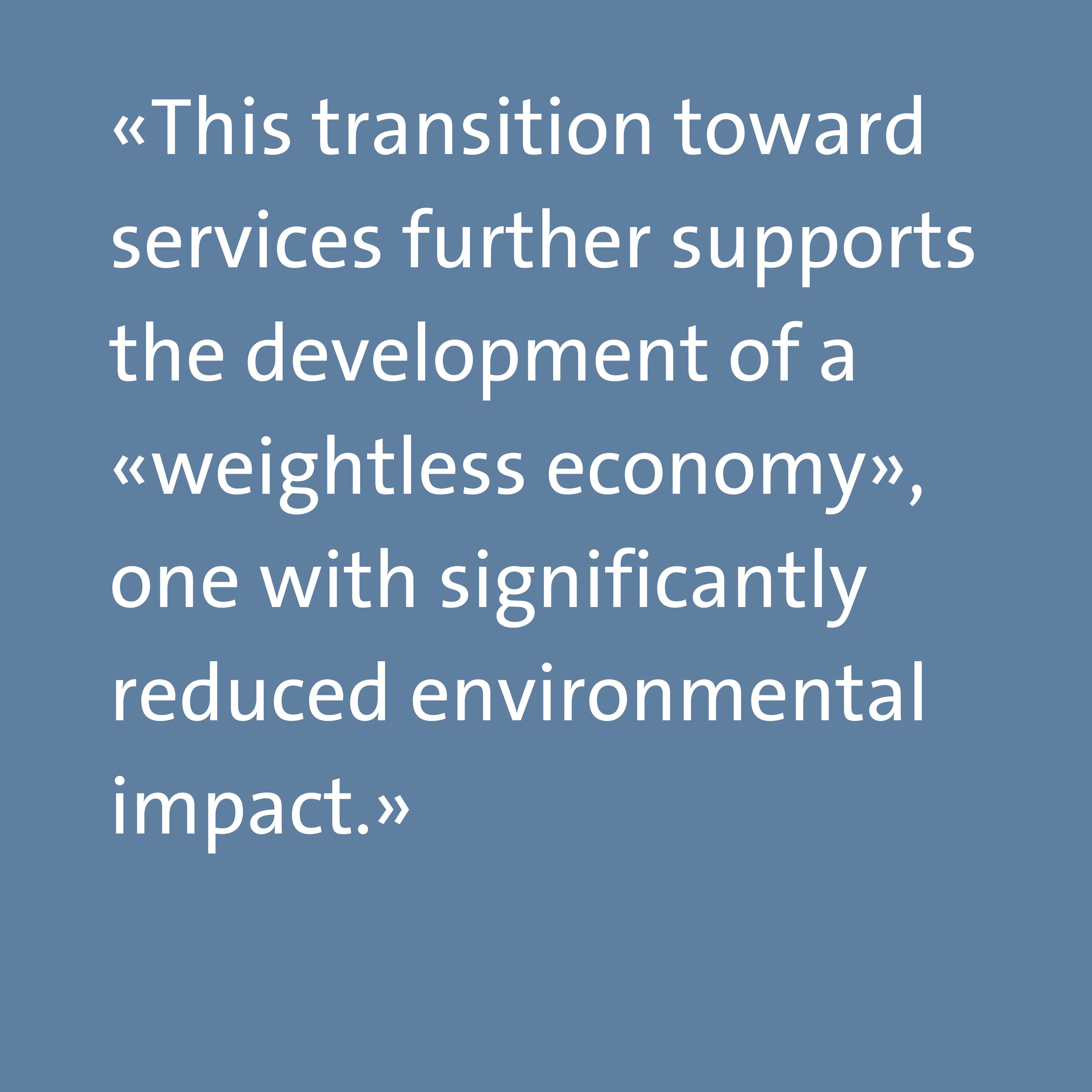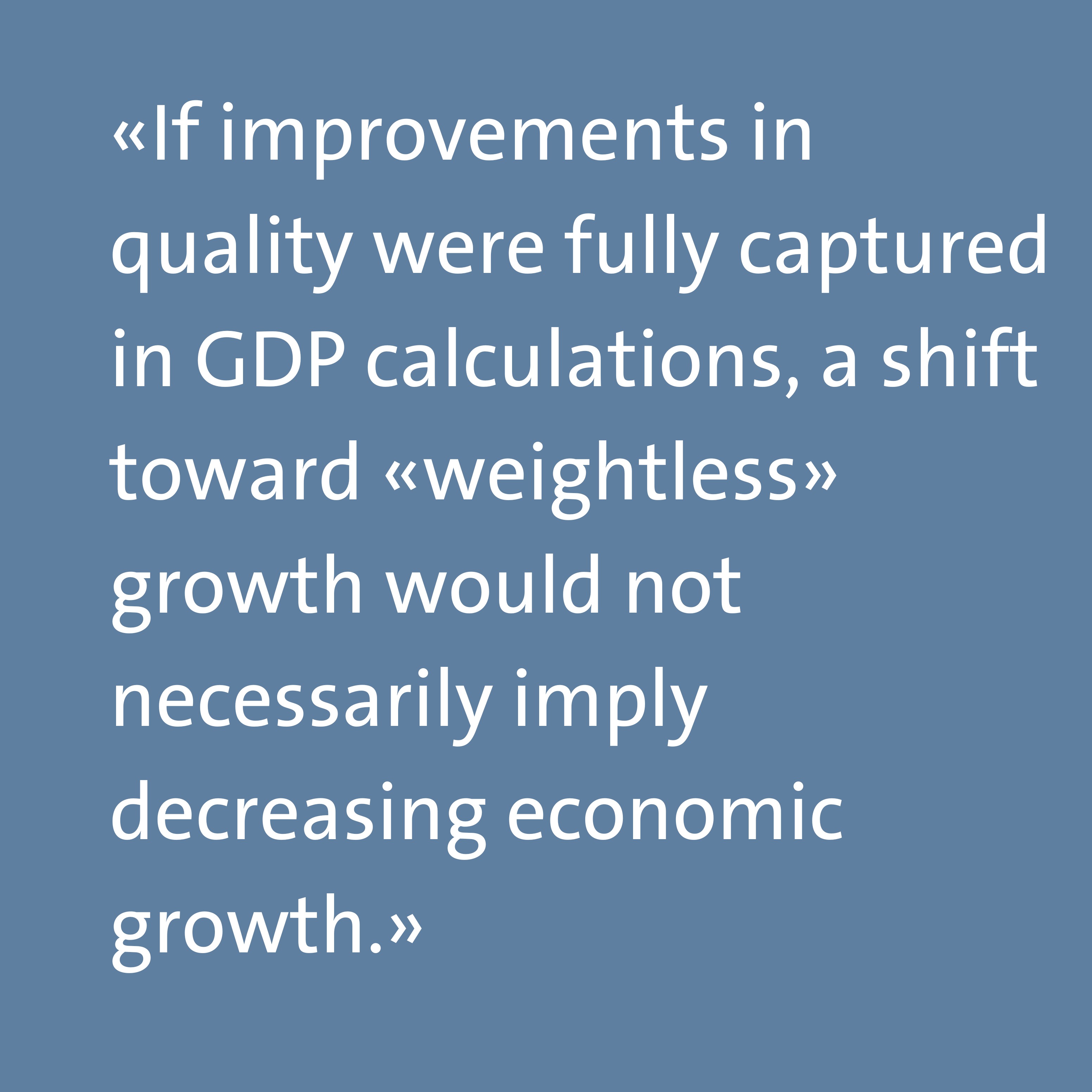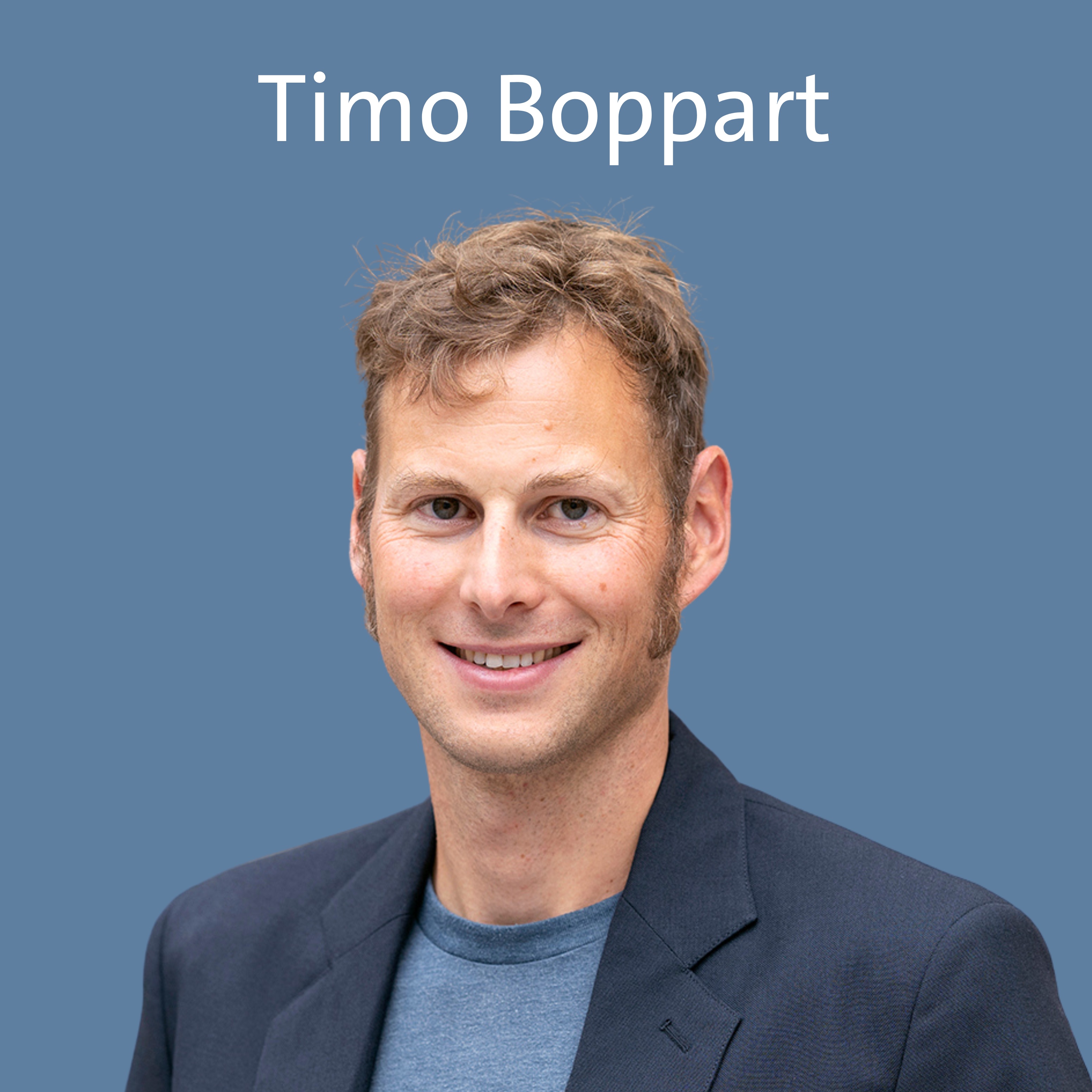"Weightless economy": Sustaining growth while lowering environmental impact
Timo Boppart, Professor of Economics, contributes to the degrowth debate through a new growth theory.

Largely driven by human activity and the production of material goods, climate change is accelerating. As its effects become increasingly tangible, the idea of a degrowth economy has gained traction in public awareness, policy discourse, and academic research. Timo Boppart, Professor of Economics at our department, along with his co-authors, contributes to this debate through a new growth theory. Their model explores an economy where growth goes hand in hand with a shift from consuming necessities to high quality goods and services. That is, from quantity to quality. This shift ultimately results in a move toward a "weightless economy", a model that ultimately reduces the environmental footprint.

Consuming quality over quantity
Using U.S. data, the paper sheds light on new insights into long-established, high-income economies. One key finding of the study is that as economies grow and incomes rise, consumers can move beyond basic products and increasingly demand higher-quality goods, such as luxury items. One direct effect of this consumer shift lies in the production of material-intensive to quality-enhancing consumption, which ultimately encourages innovation in this sector. Since those sophisticated products typically generate fewer emissions per unit, the impact on the environment of a dollar spent decreases.
Moreover, greater wealth enables broader access to a wide range of services and increases the consumption of immaterial goods such as leisure activities. Mature economies rely heavily on the service sector, which consistently has a lower environmental footprint compared to the production of material goods. This transition toward services further supports the development of a "weightless" economy, one with significantly reduced environmental impact. Quantifying the impact of this shift remains a central challenge but the paper makes some first steps in this direction.

Improved well-being despite lower GDP
According to the degrowth advocates, who challenges the notion of unbounded economic growth, only a shrinking GDP allows to successfully fight climate change. The new theory developed in the paper challenges this view. Rather, the objective is to transition to an economy driven by quality rather than quantity. In line with this theory, the authors specifically question the stable relationship between GDP and emissions in the context of a shift toward a "weightless" economy. In fact, a key challenge in this structural transformation lies in the difficulty of quantifying innovation and, consequently, how it is reflected in GDP figures.
The researchers argue that if improvements in quality were fully captured in GDP calculations, a shift toward "weightless" growth would not necessarily imply decreasing economic growth. However, one consequence of transitioning to a quality-driven economy may be a slowdown in measured GDP growth and an eventual convergence toward a finite level of material production, an endogenous limit to growth, even as quality-adjusted GDP and overall welfare continue to rise.
From a theoretical perspective, the shift to a "weightless", service-based economy appears therefore to be the appropriate path forward. Yet, the urgent challenge remains: implementing this transition quickly enough to address pressing environmental concerns, which may not happen.
Hurdles to overcome
Environmental policy such as taxing material intensive goods or subsidizing clean services, could accelerate structural change and raise welfare while cutting emissions. The main hurdle, however, is that these policies must address distributional concerns. In particular, low-income households, who depend more heavily on material necessities, are likely to oppose to such taxes unless compensatory measures are put in place.
Yet another central aspect of the study is the way this new model would respond in an open-economy setting. This perspective suggests that international trade can accelerate the shift by raising global incomes and steering innovation toward low carbon, service oriented activities. However, the offshoring of polluting production to regions with weaker environmental regulations would create additional risks that policy must mitigate.
"Weightless" growth, a new model to be developed
While the authors introduce a new growth model based on demand shifting from quantity to quality, they acknowledge that much has yet to be explored on this new economic model path.
They suggest several next steps such as better measuring emissions tied to product quality and new energy-hungry services like AI; letting richer and poorer households buy different quality tiers; exploring a voluntary move toward non-markets or "relational" goods and quantifying how much today’s slower GDP growth reflects this quality-driven transition.

.jpg)